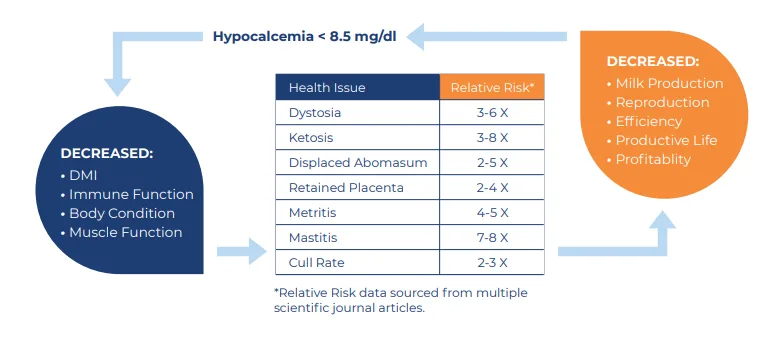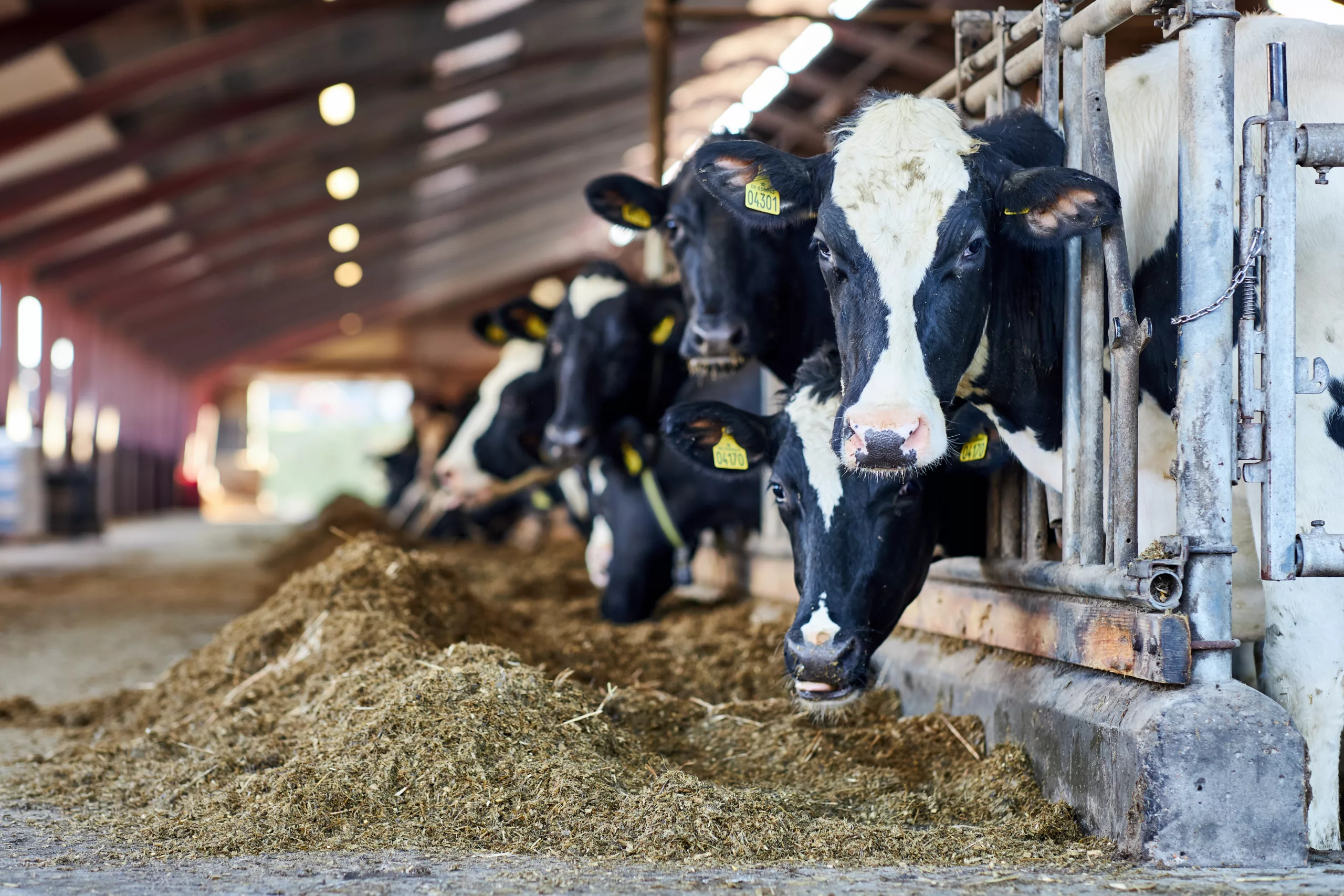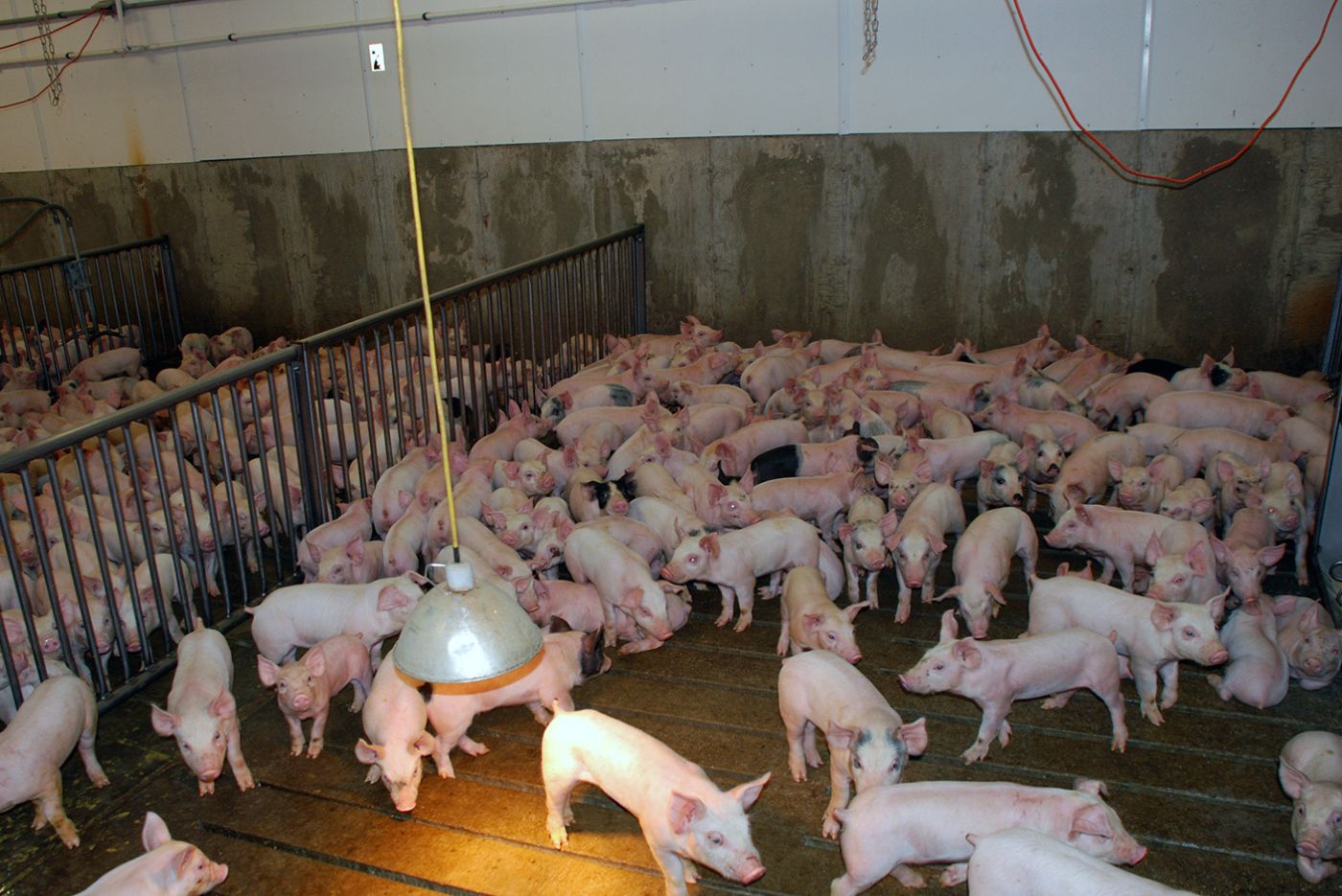Start
This summary is based on the Hoard’s Dairyman webinar by Pat Hoffman, Professor Emeritus, University of Wisconsin
Hypocalcemia or “low blood calcium” is still a common health issue in dairy cows at the initiation of lactation. The condition ranges from the clinical manifestation known as “milk fever” to a subclinical occurrence that is discernable by low blood calcium but shows no outward evidence of the disease. A cow with clinical milk fever is recumbent and unable to walk. Less dramatic but equally concerning is subclinical hypocalcemia (blood calcium below 8.5 mg/dl). Cows experiencing subclinical hypocalcemia may have reduced dry matter intake, lowered immune response, decreased milk production, and poor reproductive performance. In addition, they are at a higher risk of developing other health issues, such as mastitis, metritis, displaced abomasum, and retained placenta, which collectively leads to a higher cull rate.
Negative effects of hypocalcemia

Over the years, different dietary management strategies have been studied to reduce the risk of milk fever and improve blood calcium levels. “A common dietary management practice has involved manipulating calcium homeostasis to improve blood calcium,” said Hoffman. “A more recent approach, which is a paradigm shift in how we discuss mitigating milk fever, is directed at manipulating phosphorus homeostasis to achieve the same blood calcium improvement.”
The biology of this improvement in blood calcium through manipulating phosphorus homeostasis hasn’t been well studied until recently. In 2020, Walter Grunberg’s research group fed a pre-fresh diet adequate in dietary phosphorus – 0.30% DM – and compared it against a diet that had restricted dietary phosphorus – 0.16% DM (Effects of restricted dietary phosphorus supply during the dry period on productivity and metabolism in dairy cows). This low level of dietary phosphorus of 0.16% DM was accomplished by slightly restricting feed intake and sourcing feedstuffs extremely low in dietary phosphorus. The cows fed a diet restricted in phosphorus had higher blood calcium at calving and increased markers of bone mobilization. This study supported previous work performed by Grunberg’s group that initially showed manipulating phosphorus homeostasis improved blood calcium and suggested the blood calcium benefit was working through increasing bone mobilization.
According to Hoffman, the mechanism of phosphorus homeostasis has only recently been unraveled. Phosphorus homeostasis is primarily regulated by the bone hormone Fibroblast Growth Factor-23 (FGF-23). This hormone and mechanism appear to be independent of the PTH mechanism that regulates calcium homeostasis. When blood phosphorus is reduced, levels of FGF-23 decrease, which in turn increases bone mobilization, liberating both calcium and phosphorus to the blood. Additionally, depressed FGF-23 can increase vitamin D activation and subsequent absorption in the intestinal tract.
X-Zelit®, a dietary phosphorus binder, is a novel approach to induce a mild hypophosphatemia through restricting dietary phosphorus to reduce milk fever and subclinical hypocalcemia. It capitalizes on manipulating phosphorus homeostasis, rather than the calcium homeostasis. X-Zelit is a research-proven strategy that is commercially available and recommended to be fed for 14-21 days pre-fresh to prevent milk fever and subclinical hypocalcemia.
After Hoffman discussed the biology of X-Zelit, he discussed practical implications at the farm level. The X-Zelit approach offers advantages beyond the consistent improvement in blood calcium levels and reduction in milk fever and subclinical hypocalcemia. Other advantages of X-Zelit diets include eliminating the need to check urine pH, removing the hassles of procuring low potassium forages and formulating for low potassium diets. This offers farms the flexibility to feed alternative home-grown forages, ones that are typically higher in potassium as well as protein (rye, sorghum, haylage). Hoffman made sure to point out that X-Zelit is only a pre-fresh product; this strategy does not fit a one-group dry cow strategy and should only be fed in the close-up diet for 14-21 days.
In summary, Hoffman described how current-day research has brought a novel approach to improving blood calcium and preventing hypocalcemia through the incorporation of X-Zelit usage pre-fresh. This unique approach involves inducing a mild hypophosphatemia to trigger bone mobilization and significantly improve blood calcium concentrations in transition cows. It helps take the negativity out of your pre-fresh program.





